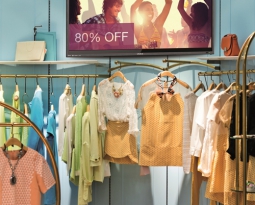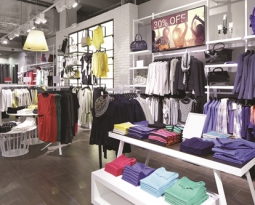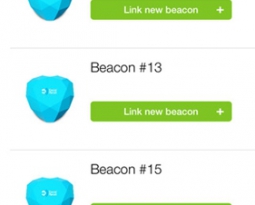
Beacons are already making waves in retail environments by providing companies with a means of connecting directly with each customer. As a result, these retailers gain access to extra data and resources that can be used to improve the customer's experience and enhance their brand. One shining example of this trend is Macy's. According to the Interbrand 2014 Best Retail Brands Report, Macy's enjoyed a 383 percent gain in brand value last year. Much of this growth was spurred by responding quickly to shopping behavior data gathered by beacon technology. By establishing itself as a pioneer in omnichannel retail marketing, Macy's has reversed its trajectory from a state of stagnation and toward confident growth.
Other retailers can mimic Macy's success by working with companies that help retailers launch their Physical Web journey by providing both notification management systems and beacons (Digital Social Retail is one that offers end to end solutions). Push notifications, proximity-based coupons and other unique app features do more than direct the customer within the store or offer discounts. The decisions that shoppers make in response to prompts and hints from their smartphones represent valuable behavioral trends that retailers can use to refine the customer experience at their stores.
Generating heat maps from consumer activity can help to improve retail store layouts
Retailers can design store layouts that respond to the needs of their customers by deploying the right mix of Wi-Fi, Bluetooth and beacon technology. This hardware can be used to track the location of retail customers as they enter the store, browse and complete their shopping. Compiling multiple customer heat maps can even help retailers identify the most common walking paths for customers as they enter the store.
Heat mapping is also ideal for tracking anomalies i.e. products or services that customers are willing to track down, even if they have to do a bit of searching. Once this data is on hand, retailers are able to better understand the customer experience in their own store. Then the store's layout can be redesigned to make the entire store feel more accessible to customers.
Helpful app features can double as means to collect valuable purchasing data
Target has provided customers with several nifty features via the company's smartphone app, sending notifications and coupons based on the location of the customer and their purchasing history. Another perk is the app's shopping list, which makes it easy to stay organized while shopping and removes the need to open multiple apps while shopping, according to Retail Customer Experience. On the retail side, shopping lists created inside the app can also act as a source of shopping data. For example, cross referencing this shopping list app with the actual products purchased at the end of a shopping trip can provide deeper insights into shopper decisions.
"Beacon technology simplifies this data collection for retailers."
Proximity-based marketing can be used to collect in-store feedback in real time
Detailed customer feedback is hard to find. Retail customers typically loathe the process of filling out forms and are unlikely to visit an online survey after they get home. Beacon technology makes it simple to ping customers for the feedback directly when they approach a popular product or pass by a new marketing display. Push notifications can be used to instantly collect first impressions, and adjustments in the store can then be made that reflect customer responses. By rewarding customers with small bonuses or incentives after they respond, retailers can reinforce the value of beacon technology and encourage more customers to use these services.
Getting into a customer's head and retrieving honest, unfiltered opinions can be a challenge. Beacon technology simplifies this data collection process by making it as personable and non-intrusive as possible.










